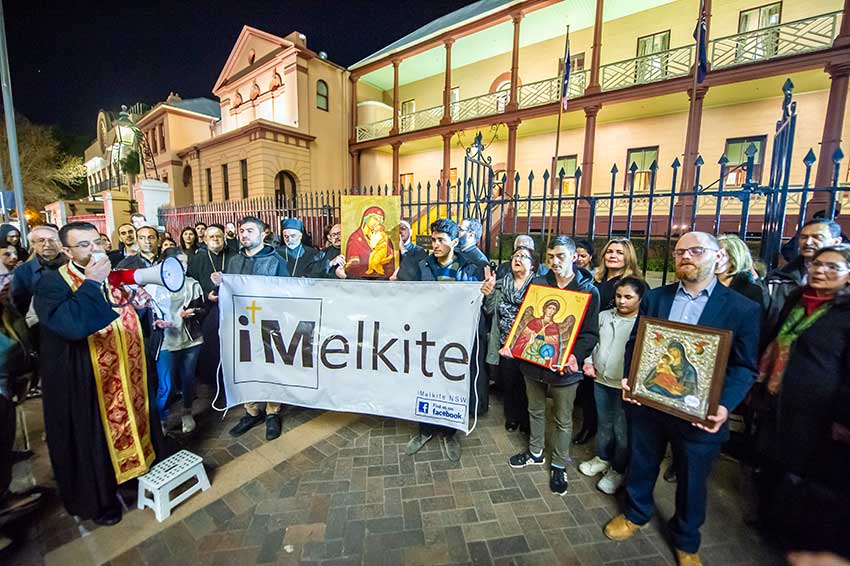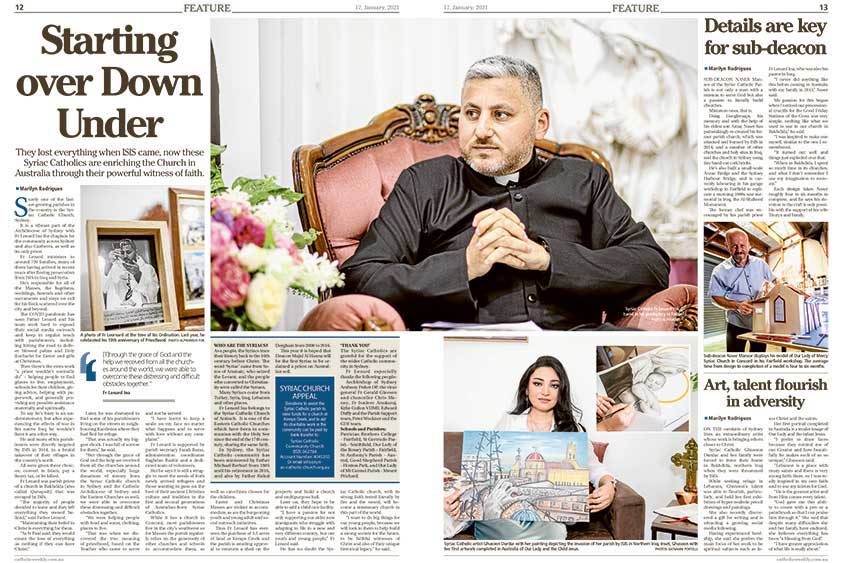Members gathered for the First Assembly of the 5th Plenary Council of Australia have backed calls to ensure the Catholic Church in the country more fully embraces its full liturgical diversity, particularly the rich presence of Eastern Rite churches.
278 members from across Australia are gathering largely online this week for the first Plenary Council in Australia in over 80 years.
Eastern Rite churches are well represented at the Assembly including bishops and laypeople from the Maronite, Melkite and Syro-Malabar Eparchies and the Chaldean and Ukrainian Catholic Churches.
One of the key questions on the agenda for the Plenary Council which the Members are considering is how the Church might better embrace its diverse liturgical traditions and the cultural gifts of immigrant communities to enrich the spirituality and worship of the Church in Australia.
Through the small group sessions at the Assembly, Members have reflected on the need to know and understand one another’s rites and celebrations through education in schools and the formation of future leaders and clergy.
The Archbishop of the Chaldean Catholic Church in Australia, Amel Nona has told the Assembly, one of the greatest blessings of the Church was its unity in liturgical diversity.
“Liturgy means diversity in services, but faith is one. The Catholic Church is the only one and unique in its variety of rituals, many liturgical cultures but all within one garden, This is the true richness of the Catholic Church”, Archbishop Nona explained.
The Iraqi-born Archbishop urged the Plenary Council to be cautious around recommending any changes to the liturgy in the Australian Church.
“Since rituals are the life of Churches, especially Eastern ones, every change in any aspect of the Church needs to consider the existence of the rituals and their greatest impact on any change. The aim is not to lose the diversity of rituals for certain administrative and institutional arrangements. Moreover because liturgy is the heart of the Church and therefore it cannot be separated from the Church in all its dimensions and aspects”, Archbishop Nona said.

One of the group facilitators, Dr Maeve Heaney, a consecrated missionary from the Verbum Dei Community, said there has been a genuine call at the First Assembly to ensure the Catholic Church more fully embraces its rich liturgical diversity.
“Our group discussed the need to remove the sense of superiority or inferiority of any rite over another, to recognise an intercultural church, in that we intersect and can enrich one another. We also recommended ceasing to use the term ‘immigrant communities’ and instead use language that reflects our inter-cultural reality”, she said.
Dr Heaney asked the gathering whether a national body or commission could be established to facilitate this, especially in relation to the Eastern Churches.
Groups meeting at the First Assembly have also proposed that the second and final Assembly to take place in Sydney in July 2022 better reflect the diversity of rites within the Church in Australia.
The President of the Plenary Council, Archbishop Timothy Costelloe SDB, has emphasised that any proposals put forward by Members at the First Assembly this week would need to be discussed over the months leading up to the second and final assembly in Sydney next July.
Formal motions can be put forward only at the second assembly with a vote taken then which would then become binding for the Catholic Church in Australia.

The most recent data on Catholic Church attendance in Australia, compiled by the National Centre for Pastoral Research (NCPR), estimated around 37 percent of Mass-goers were born in non-English speaking countries, with attenders born in The Philippines, India, Sri Lanka and Vietnam accounting for much larger proportions of attenders compared to the Catholic population as a whole.
Across Australia, it’s estimated that Mass is celebrated in at least 43 different languages.
Data from the NCPR shows that Eastern Rite Catholics have the highest rates of Mass attendance of any group in the Catholic Church in Australia.
It estimates there are approximately 60,000 Eastern Rite Catholics in the country. The Melkite community has the highest practicing rate with approximately 73 percent attending Mass each week, while approximately 50 percent of Maronites attend Mass weekly. This compares with 16 percent of Catholics across the Archdiocese of Sydney being weekly Mass attendees.
Maronite Bishop, Charbel Tarabay has told The Catholic Weekly, the Plenary Council has highlighted the great cultural and liturgical diversity of the Catholic Church in Australia.
“For many people, this is the first time they have had an experience of a national and multi-faceted church, made up of members of both the Eastern and the Latin Catholic Churches. They see, perhaps in a new way, that the Catholic Church is universal”, Bishop Tarabay said.
For many people, this is the first time they have had an experience of a national and multi-faceted church, made up of members of both the Eastern and the Latin Catholic Churches. They see, perhaps in a new way, that the Catholic Church is universal
“It is wonderful to feel the unity so strong in this diversity, We are made up of clergy and laity, the young and the old; of people from different global cultures, and from diverse religious traditions.
“The diversity of opinions which I have encountered during the Plenary is another aspect of this. We have brought together a treasure house of experiences, and ways of worshipping. Since we are worshipping the One True God in the unity of faith, this is exciting, and I am hope filled”, he added.
Related
